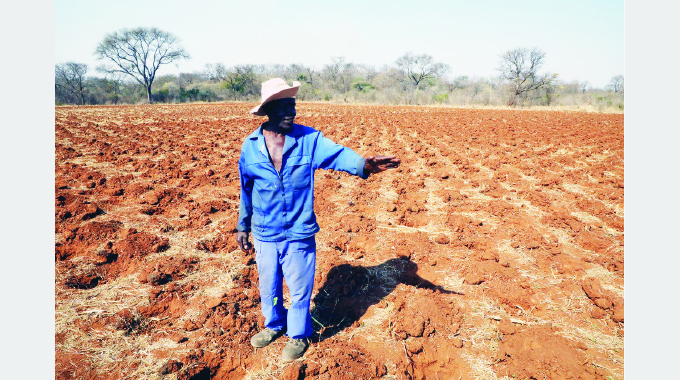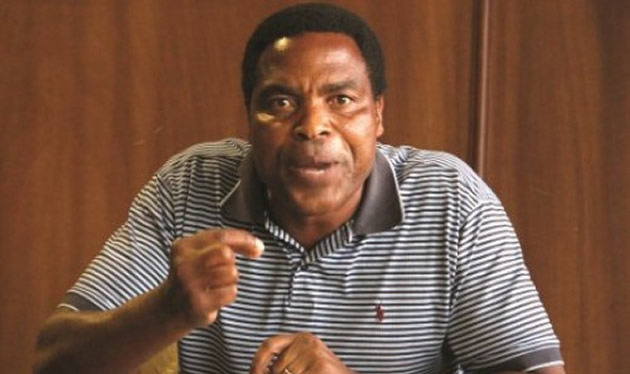Pfumvudza preps gather momentum

Herald Reporters
Farmers on the Pfumvudza/Intwasa programme are busy upgrading their older Pfumvudza/Intwasa plots, with some extending the number of their plots, while new people joining the programme are finishing their training.
The Second Republic led by President Mnangagwa is targeting three million farmers on small-scale farms with up to five plots each, plus 500 000 urban farmers on smaller plots with one plot each.
Newcomers to the Pfumvudza/Intwasa programme have to go through training and the free inputs extended by President Mnangagwa only become available once Agritex officers have certified that the farmer has undergone training, prepared the land and gathered the required mulch.
With the bulk in the programme having been trained in the last two years, the newcomers are now undergoing training, and while farmers can recycle older plots, many want to expand their production and so while clearing up older plots they are also digging new ones.
Pfumvudza is a concept aimed at climate-proofing agriculture by adopting conservation farming techniques and involves the use of small areas and applying the correct agronomic practices for higher yields, rather than having large fields with low or zero yields if the crop fails.
The concept, which is mostly applied to maize, traditional grains, legumes and cotton, is also meant to accelerate the commercialisation of smallholder agriculture with a farmer using all five plots likely to be able to sell more than 60 percent of their harvest.
Many smallholder farmers do not have draught power and cannot afford irrigation equipment, and Pfumvudza has presented a better option, as they only have to make planting stations and gather mulch for moisture conservation.
This will also make life easier for some farmers such as old people and child-headed families who do not have the capacity to dig the entire field manually.
To improve the yield, Pfumvudza inputs will be distributed in line with agro-ecological regions to boost yields.
Pfumvudza inputs distribution is set to start on September 30, with the Government expecting the farmer training and digging of planting holes to be concluded on the same day.
The supplies have all been procured and trucks are now moving them to the depots close to the farmers for the final distribution.
While older Pfumvudza plots can often be recycled, since the conservation agriculture ensures retention of humus from rotting mulch and manure, many farmers want to expand their plots to reach the five that can be supplied through Presidential Inputs.
So both the old hands and the newcomers have been busy digging and collecting mulches, requirements to get on the Agritex list.
By ensuring that all farmers who want to benefit from Pfumvudza have gone through training and have prepared their plots, and someone has seen the field, both corruption and the risk of phantom farmers are minimal.
In the Midlands, farmers are expecting to receive their share of Pfumvudza inputs from this week as preparations escalate.
Acting Midlands provincial director agriculture and rural development Mrs Madeline Magwenzi said over 300 000 households have already been trained and are completing potholing and mulch collection.
Midlands province is expected to surpass last year’s 20 500 hectares put under Pfumvudza.
In Mashonaland East, the provincial Agritex officer Mr Leonard Munamati said areas that receive little rainfall will get more of traditional grains instead of maize.
“In this province, areas like Mudzi, Mutoko, UMP (Uzumba-Maramba-Pfungwe), parts of Hwedza and Chikomba, experience little rainfall and will receive more traditional grains than maize,” he said.
“Areas like Goromonzi, Marondera and part of Murehwa, will receive more maize seed as they receive more rainfall.”
Mr Munamati urged farmers in the province to mulch their plots to conserve moisture.
Mashonaland East province is targeting to distribute inputs to 488 197 farmers under Pfumvudza.
Already 118 390 farmers have prepared their new plots.
In Mashonaland West, farmers in Mhondoro under Chegutu district are calling for an early distribution of inputs as most villagers in Wards 2,3,4 and 5 need to beat rains that can flood the fields.
A number of farmers have harvested their vlei wheat and have prepared land for Pfumvudza.
Parayangiwa Village head, Mr Michael Parayangiwa, said due to delays in distribution of inputs in his area, farmers with extra money have bought inputs so as to beat the planting deadline in their area that is prone to flooding.
Mr Parayangiwa called on seed companies to produce varieties that are suitable to their area.
Ward 2 Councillor, Ms Ida Mbiriza, said the community had done wheat for ages, but was neglected before the coming in of the Second Republic, which now recognises them as key players in wheat production.
Provincial Agritex officer, Mrs Evelyn Ndoro, said seed would arrive on time.
“Our first targeted areas include Mhondoro and Chegutu where farmers plant their crops earlier,” she said.
In Matabeleland South, which falls largely under agricultural region 5 and meteorological region 3, farmers need above 450 mm of rain per season for crops to do well.
Acting provincial Agritex director Mr Mkhunjulelwa Ndlovu said they were targeting 130 000 new farmers from all the seven administrative districts.
“So far, we have trained 298 members of staff and 58 048 new farmers from all the seven districts on Pfumvudza/Intwasa as we prepare for the summer cropping season,” he said.
“You will also note that the other farmers were trained during the two seasons from inception to date. Thorough training is for the new entrants.”
Mr Ndlovu said they had trained 8 414 in Beitbridge, 7 903 in Bulilima, 12 000 in Gwanda, 9 772 in Insiza, 9 910 in Mangwe, 5 595 in Matobo, and 4 454 in Umzingwane districts.
In Masvingo province, preparations continue.
The development comes as Masvingo has done well in Pfumvudza, with Zaka farmer, Mr Concern Mutasa, winning the Pfumvudza Farmer of the Year award at the Harare Agricultural Show last month.
Masvingo province is divided into agro-ecological regions 3, 4 and 5, and farmers will get crops that will do well in their areas.
Acting Agritex provincial director for Masvingo Mr Aaron Muchazivepi said nearly 100 000 Pfumvudza plots have been prepared so far.
“We are looking forward to a very successful 2022/23 Pfumvudza season in Masvingo and to date we have trained about 94 000 farmers on the programme and an almost same number of plots have been prepared to date,” he said.
“The target this year is to have at least 476 000 on Pfumvudza. Farmers are currently gathering mulch and lining their plots.”
Masvingo farmers will get maize and traditional grains and sunflower seed.
The province is also focusing on fodder crops as part of efforts to rebuild its beef herd.
Mashonaland Central says it is ready for the 2022/2023 Pfumvudza season with over 400 000 farmers having registered for the programme.
Speaking at the handover of a tractor to a Pfumvudza farmer in Shamva South, provincial agronomist Mr Bernard Torevasei said communal farmers have traditionally averaged 0,8 tonnes per hectare, but Pfumvudza quadrupled their yield to 5 tonnes per hectare.
“This is a great leap and record breaking achievement. In the wake of climate change this is the way to go,” said Mr Torevasei. Some farmers find the cost of fertilisers too high and we encourage them to make use of manure and mulching.”
All farmers are expected to have their inputs by October.
Zimbabwe National Farmers Union vice president Mr Edward Dune confirmed that most farmers were on the ground preparing the land ahead of the cropping season.
“Pfumvudza is a very good programme considering that a majority of people in rural areas lost their cattle due to tick borne diseases,” said Mr Dune.
“Pfumvudza is a good programme, especially to those farmers. It is also a climate-proof scheme and farmers can work towards development and ensure food security.”











Comments